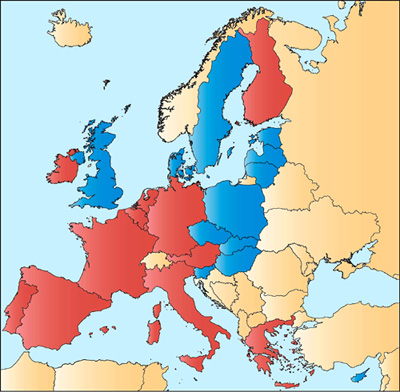 The process of regional integration has led to the creation of the European Union.
The process of regional integration has led to the creation of the European Union.
On the integration scale, the EU would today be anywhere from 6 to 8; economic integration is much more complete than political integration. Also, integration is a process — it does not happen all at once. In the case of the EU, it is also multi-layered, since countries are allowed to “opt out” of certain aspects of integration – such as adoption of the euro. (For example, Great Britain, Sweden, and Denmark have not adopted the euro).
Let’s look at how economic integration developed in Europe. The EU grew out of the European Economic Community and before that, the European Coal and Steel Community.
The Integration Scale:
| 1 |
5
|
10
|
| ECSC |
Single Market
|
??? |
| European Economic Community |
European Union
|
A Brief History:
The European Coal and Steel Community was created in 1952 to regulate and administer the production of coal and steel in six European countries (France, Germany, Italy, Belgium, the Netherlands and Luxembourg). On the integration scale it would be at 1.
In 1957, the same six countries (the Six), agreed to form the European Economic Community (EEC or EC) to integrate the economies of the six into a single market (2 to 5 on the integration scale).
By 1992, the single market had been achieved and the participating countries (now 12) agreed to form a European Union. The European Union was given power to go beyond the creation and regulation of the single market and to begin the process of political integration. (6 to 8 on the integration scale)
So the European Union represents an advanced stage of economic integration and beginnings of political integration. It is the result of the co-operation between countries and it is the organization where common decisions are taken.
But what type of organization is the European Union?